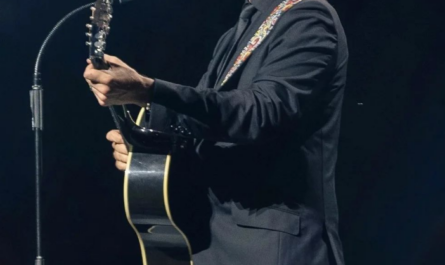Tom Hiddleston has built an impressive career playing intriguing, complex characters in major blockbuster franchises like The Avengers and Thor.
[bg_collapse view=”button-orange” color=”#4a4949″ expand_text=”Show More” collapse_text=”Show Less” ]
While his movies are always highly entertaining, re-watching with a more analytical eye reveals they often have surprising depth and convey thoughtful messages. Hiddleston excels at portraying characters with motivations that aren’t always obvious, and the directors he works with are masters at using symbolism, mythology, and genre conventions to say more than meets the eye. Let’s take a deeper look at some of Hiddleston’s most famous roles and the movies themselves to uncover some of the hidden gems and messages they contain.
Loki in the Marvel Cinematic Universe
One of Hiddleston’s most iconic roles is that of Loki, the god of mischief, in the Marvel Cinematic Universe films Thor, The Avengers, and Thor: Ragnarok. At first glance, Loki seems like a classic villain – power-hungry, deceptive, and intent on causing chaos. However, digging deeper into his motivations reveals a more complex character wrestling with feelings of jealousy, a desire for belonging, and a need to prove himself.
In Thor, we learn Loki was adopted by Odin after the war in Jotunheim. This revelation shakes Loki’s sense of identity and place in Asgardian society. Feeling like an outsider in his own family and kingdom, Loki lashes out, attempting to prove himself by any means necessary. His actions, while misguided, stem from deep-seated insecurities rather than pure evil. This adds an element of tragedy to the character.
In The Avengers, Loki is even more unhinged as he tries to conquer Earth in a desperate bid for approval and power. But the film hints there are unseen forces manipulating him as well. By the time of Thor: Ragnarok, Loki has given up on gaining his father’s love through destruction. He instead focuses on looking out for his own well-being, showing how trauma and rejection can change someone’s motivations over time.
Hiddleston brings nuanced layers to Loki, making him one of the most compelling villains in film. His performances ensure audiences understand Loki isn’t simply a “bad guy” – beneath the surface lies a complex psyche exploring themes of identity, family, and the corrupting nature of power and loneliness. Loki shows how seemingly villainous characters can harbor understandable, even sympathetic motivations worth deeper consideration.
Historical Context in War Horse
2011’s War Horse, directed by Steven Spielberg, provides a look at the horrors of World War I through the eyes of a horse named Joey. On the surface, it’s a heartwarming story of the bond between a boy and his horse, and Joey’s journey through the war. But the film actually conveys powerful anti-war messages when viewed in its proper historical context.
World War I was one of the deadliest conflicts in history, utilizing brutal new technologies of mechanized warfare that ravaged Europe’s countryside and populations. It marked a violent break from the past, shattering old ideals of honor and chivalry on the battlefield. Spielberg captures this jarring transition by showing how Joey, a symbol of rural agricultural life, becomes entangled in the industrialized carnage of the modern war machine.
Researching the actual conditions soldiers endured in the trenches, with constant shelling, disease, gas attacks and millions of casualties, illuminates the film’s message. War destroys all that it touches, regardless of nationality or species, breaking the natural order. By humanizing the perspective through an innocent equine protagonist, War Horse makes a powerful anti-war statement that has resonated with audiences for decades. It’s a prime example of how understanding historical context enhances appreciation for a film’s deeper messages.
Symbolism and Mythology in Crimson Peak
Director Guillermo del Toro is a master of crafting richly symbolic worlds, and 2015’s Crimson Peak is no exception. On the surface, it’s a gothic ghost story about a woman unraveling the dark secrets of her new husband’s creepy mansion. But del Toro layers in references to mythology and symbolism that add profound thematic layers.
The period setting of late 19th century England evokes a time when spiritualism and supernatural beliefs were prevalent. Crimson Peak references this context through Gothic tropes like the decaying manor, family curses, and ghosts seeking vengeance. Del Toro also utilizes common symbolic colors – crimson representing passion, blood, and death.
Most powerfully, the film references the myth of Persephone, queen of the underworld. Like Persephone who is kidnapped by Hades, the heroine is drawn into an ominous world beneath the surface. This alludes to themes of female oppression, toxic relationships, and the dangers of unchecked male sexuality and dominance.
By understanding del Toro’s intentional use of symbols, references and mythology, viewers can appreciate Crimson Peak on a whole other analytical level. It transforms from a simple ghost story into a thoughtful allegory exploring deeper universal ideas about gender roles, power dynamics, and the darkness that can lurk beneath a picturesque surface. Symbolism is one way films convey sophisticated messages worth unpacking.
Subverting Genre Conventions in Only Lovers Left Alive
2013’s Only Lovers Left Alive, directed by Jim Jarmusch, takes an unconventional approach to the vampire genre to send a thoughtful message about creativity, isolation and society’s fleeting obsessions. Where most vampire films glorify blood-sucking immortality, this low-key indie drama presents a more contemplative view through its melancholic, intellectual protagonists Adam (Hiddleston) and Eve (Tilda Swinton).
As two aging vampires who have witnessed centuries of human history, Adam and Eve have grown disillusioned with modern culture’s shallowness and lack of appreciation for art and knowledge. They seek isolation and peace in Detroit and Tangiers rather than participating in a world that has lost its way.
Jarmusch uses the vampire trope not for cheap thrills, but as a metaphor for creative outsiders. Adam and Eve represent eternal souls who have outlived their time and see the flaws in each new era. They yearn for deeper connections in a society focused on trendy superficiality and mass consumption over substance.
By subverting typical vampire movie clichés, Only Lovers Left Alive offers a thoughtful critique of culture through its melancholy protagonists. It’s a prime example of how genre films can convey sophisticated commentary when directors play with audience expectations in new ways. Hiddleston and Jarmusch ensure viewers find more than meets the eye.
Deeper Appreciation Through Discussion
As these films demonstrate, Tom Hiddleston’s roles and the directors he works with are clearly intent on adding layers of complexity beneath entertaining storytelling. Movies like War Horse, Crimson Peak, and Only Lovers Left Alive have just as much, if not more, to say when viewed through a analytical lens that considers history, symbolism, mythology and subverted genre conventions.
Fans online have also added their own insightful theories and discussions that deepen appreciation further. Reading commentary and analyzing hidden details together can be a rewarding experience that keeps these stories resonant long after initial viewings. Hiddleston excels at bringing nuance to compelling characters, and both he and his directors craft films containing thoughtful messages just waiting to be uncovered through deeper exploration. Taking the time to dig past surface entertainment value opens up a world of hidden gems and complex ideas in store.
[/bg_collapse]



